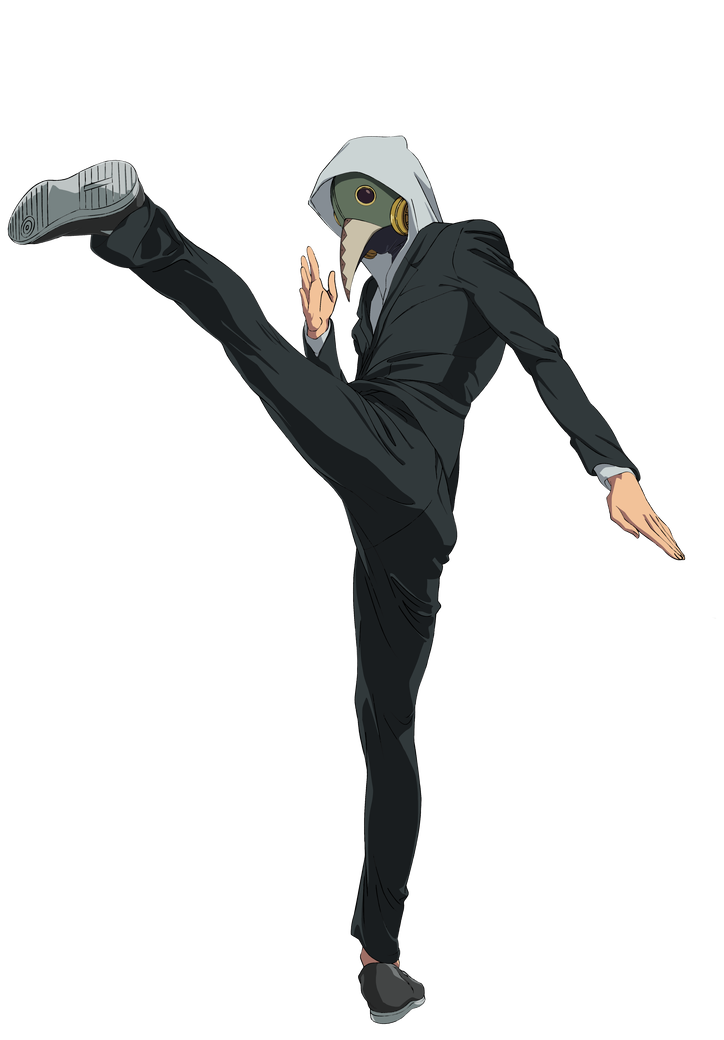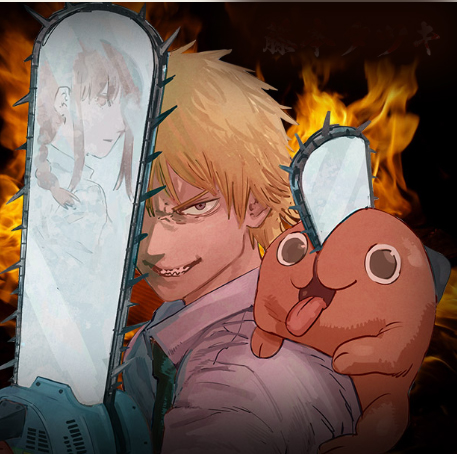# Unveiling the Visual Storytelling: Fujimoto Tatsuki’s Battle Choreography in Chainsaw Man!
##
Introduction: The Art of Visual Storytelling
In the exhilarating universe of manga, storytelling transcends mere words; it becomes an electrifying tapestry woven with stunning imagery, raw emotion, and intense action. One of the most vibrant examples of this phenomenon is Fujimoto Tatsuki’s “Chainsaw Man.” This groundbreaking series has redefined the standard for battle choreography in manga, orchestrating a dynamic interplay between visuals and narrative that captures readers’ imaginations and hearts. With every panel, Fujimoto invites us into a chaotic world where high stakes and fierce battles create a visceral experience that resonates deeply within all of us.
Fujimoto’s unique approach to visual storytelling encompasses more than just adrenaline-fueled action; it serves as a profound representation of the characters’ inner conflicts and their challenging realities. The battles in “Chainsaw Man” transcend traditional physical confrontations; they emerge as powerful metaphorical manifestations of the characters’ fears, desires, and traumas. As we dive into the intricacies of his battle choreography, we unearth the rich layers of meaning that Fujimoto expertly embeds within the chaos of his storytelling, revealing the heart and soul of each character’s journey.
In this essay, we will embark on an exciting exploration of Fujimoto’s multifaceted battle choreography, discovering how it acts as a lens through which we can better connect with the characters and understand their adventures. Get ready to slice through the action and unveil the vibrant essence of “Chainsaw Man”!
##
Dynamic Action and Fluid Motion
One of the most eye-opening aspects of Fujimoto’s battle choreography is its dynamic and energetic nature. Each fight scene is crafted with a remarkable sense of fluidity that keeps readers perched on the edge of their seats, eager for each explosive moment. Characters glide through their monstrous surroundings with an elegance that belies the brutality of their circumstances, their actions choreographed like a thrilling dance. This captivating fluid motion pulses with a rhythm that resonates with readers, allowing us to feel every jolt of intensity as our heroes clash with their foes.
Moreover, Fujimoto’s keen use of perspective significantly enhances this dynamic action. Frequently shifting angles and zooming in on pivotal moments, he crafts a sense of immediacy that envelops the reader in the heat of battle. Each panel bursts with energy, making it impossible to tear our eyes away. It feels as though we are right beside the characters, absorbing the adrenaline and raw emotion as they fight tooth and nail. This immersive experience is what truly sets “Chainsaw Man” apart from other action-packed manga, creating a connection that draws us deeper into the unfolding drama.
Transitioning between scenes with seamless precision, Fujimoto expertly guides the reader through each crucial moment. His unique ability to portray the chaos of battle while maintaining clarity in the narrative is significant. This balance allows readers to engage wholeheartedly with the story without feeling lost amidst the chaos, ensuring that each strike, transformation, and cry for survival resonates powerfully. It’s this attention to detail that amplifies the excitement and emotional depth of “Chainsaw Man,” making it a truly riveting experience.
##
Emotional Depth in Every Strike
While the thrilling action in “Chainsaw Man” keeps our hearts racing, it is the emotional depth that elevates it to a realm of its own. Fujimoto beautifully intertwines the characters’ internal struggles with the external conflicts they encounter, crafting a story that is not just about battles, but about deeply human experiences. Each punch thrown, each chainsaw revved, reveals their psychological battles, transforming the fight scenes into poignant reflections of Denji’s desires, fears, and harsh realities. This layer of emotional complexity enriches the narrative, ensuring that every action scene carries significant weight.
Take Denji’s relationship with power and freedom as a prime example. His fights are not solely against monstrous opponents but also against the shackles of his past life, where he felt like nothing more than a tool for others. Each victory is a powerful step towards reclaiming his identity, making us root for him not just to survive but to grow and transform. Fujimoto skillfully showcases the delicate nature of human emotions amidst chaos, making his characters relatable and their journeys compelling, inviting readers to reflect on their own lives.
Additionally, the emotional stakes are heightened through the bonds characters share with one another. Allies and friends engage in battle not just for their own survival but for the safety and well-being of those they care about, weaving a rich tapestry of connection that enhances the narrative. This camaraderie amplifies the weight of each fight, leaving readers emotionally invested in the outcome. Fujimoto’s extraordinary ability to blend heart-pounding action with heartfelt moments makes “Chainsaw Man” a truly unforgettable adventure, reminding us of the power of connection in our own lives.
##
Symbolism and Thematic Resonance
Fujimoto’s battles are more than just thrilling spectacles; they are rich with symbolism that adds layers of meaning to the visual experience. Each devil encountered often symbolizes different aspects of human fear and societal challenges, transforming physical confrontations into thought-provoking explorations of deeper themes. These devils embody societal anxieties—ranging from death to love, and existential dread—turning the fights into powerful commentaries about the complexities of the human condition.
For instance, the Chainsaw Devil represents the struggle of being ensnared in a cycle of violence and despair. Denji’s transformation into Chainsaw Man not only represents his desire to escape societal constraints but also his complex relationship with violence as a means of survival. This duality elevates the battles beyond mere victory or defeat, inviting readers to confront the unsettling truths of existence that we all grapple with.
Furthermore, the thematic resonance of sacrifice plays a crucial role in the fight sequences. Characters frequently face choices that challenge their values and beliefs, blurring the lines between heroism and villainy. This moral ambiguity enriches the narrative, prompting readers to reflect on their own values while watching the characters navigate their tumultuous world. Fujimoto’s remarkable capability to weave these themes into battle choreography transforms “Chainsaw Man” from a simple action-packed tale into a profound exploration of life’s complexities, encouraging us to embrace our own struggles with courage and determination.
##
The Impact of Visual Style: A Feast for the Eyes
Fujimoto’s distinct visual style is another crucial component of “Chainsaw Man” that captivates readers and elevates the entire experience. His expressive character designs and vivid scenery breathe life into the battles, turning each page into a kaleidoscope of emotion and excitement. The artistry is raw and unfiltered, mirroring the chaotic nature of the story and ensuring that readers are not just passive observers but active participants in the action.
Each panel tells a story of its own, with striking contrasts between light and dark, chaos and calm. Fujimoto’s use of exaggerated expressions and dramatic perspectives amplifies the emotional stakes, pulling readers deeper into the characters’ experiences. This unique visual approach allows the audience to feel every moment of tension and release, making the combat sequences not only visually stunning but also emotionally gripping.
Moreover, the artistry of “Chainsaw Man” goes beyond action; it encapsulates themes of vulnerability and strength. Fujimoto’s ability to depict both the grotesque and the beautiful serves as a reminder that life is filled with contradictions. By embracing these dualities, he challenges us to confront our own complexities, inspiring us to find beauty in our struggles. In a world that often feels dark and chaotic, “Chainsaw Man” illuminates the importance of resilience and hope, encouraging readers to face their battles with bravery and optimism.
As we navigate the challenges of life, let us remember the spirit of determination and courage embodied in Fujimoto’s work. Embrace your journey, celebrate your victories—big and small—and always strive to rise above the chaos that life may throw your way. You have the strength within you to overcome any obstacle! Keep pushing forward and let your story unfold brilliantly!

